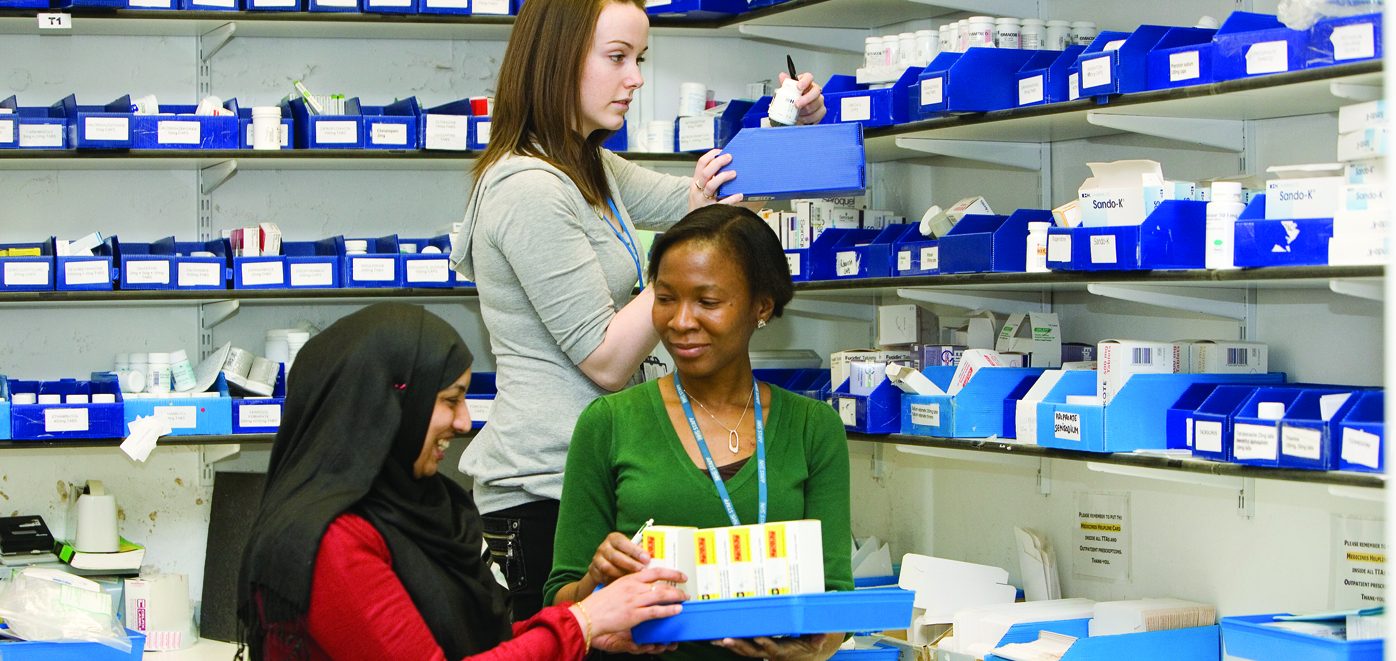Stop the lower standards â€conveyer belt’
A pharmacy crisis about maintaining professional standards is looming, as cash-hungry universities accept a â€conveyer belt’ of students, many of whom fail at the final hurdle.
The Guild of Healthcare Pharmacists (GHP), which is part of Unite’s health sector and represents 4,000 pharmacists UK wide, is concerned that more than one in four current pharmacy students will fail the registration exam at the first of three attempts after completing their degree, leaving them facing thousands of pounds of student debt after five years of study.
Similar to a doctor and dentist, a graduate pharmacist must complete a pre-registration year in practice before they are allowed by a regulator to enter the pharmaceutical register.
Part of this process is an examination of their skills to apply theoretical knowledge into practice to ensure they are fit and safe to practice independently. They have three attempts to achieve this goal.
Since the year 2000, the numbers of UK pharmacy students going to university has more than trebled from 4,000 to over 12,000-a-year, with the increase in the number of approved pharmacy schools soaring from 12 to 27 – and still rising.
There are 45,000 pharmacists currently working in the NHS and in community pharmacies, with 2,500 coming on stream each year. However, there are fears that there will not be enough jobs for newly-qualified pharmacists.
Control call
There have been calls from the GHP, employers, regulators, professional bodies, and students themselves, following a consultation on the need for control on entry standards and numbers – this was rejected last year by the coalition government.
However, today (August 11) Unite and the GHP repeated the call for a national debate about what it called â€the conveyer belt of students’ going to university, the financial imperatives driving universities’ entry policy, and the need to maintain the highest professional standards for the next generation of NHS pharmacists.
The GHP obtained the information to back its case by Freedom of Information (FoI) requests on the standards of average and median entry A-levels and uptake via the university clearing system, as well as pass rates at the entrance examination.
The figures show that some universities have entrance exam pass rates of as low as 72 per cent and uptake via clearing rates as high as 52 per cent.
“This increase has been driven by the commercial interests of some universities often with a focus on quantity achieved through a reduction in the student quality,” said GHP president Vilma Gilis.
Unacceptable
“This has now led to a situation that over a quarter of students can no longer meet the basic requirements of a professional entry examination,” she added. “This situation is unacceptable for both the graduates and their future employers – hence the call for a national debate.”
The GHP’s call to maintain education standards in the profession follows a report last month by the pharmacy education regulator, the General Pharmaceutical Council (GPhC), which found that the University of Central Lancashire had cut its entry standards in order to recruit more students.
The GPhC found that the university was “under pressure from senior management to increase student numbers” and as a result had “reduced the required standard of entry qualifications during the clearing process”.
“At a time when the public recognises the vital health role of pharmacists in delivering safe patient care and their increased move into GP practices and A&E departments, it is essential that we maintain and ideally increase standards for practitioners,” Gilis argued.
“Consequently, it is a matter of concern that we have such apparent variable standards on entry of young people being accepted by schools of pharmacy.”
Former GHP president David Miller co-ordinated the Freedom of Information enquiry and highlighted that this was the first time that data in the public domain shows a “clear association over each of the last five years between entry criteria, the number taken through clearing and the final entry exam success.
“Most of the universities were forthcoming with the data, but perhaps the most revealing aspect is that two universities declined to provide information stating it would be detrimental to their commercial interests to disclose their marketing position,” Miller explained.
Average pass rates at the pre-registration year stage have dipped dramatically from 90 per cent in 2009 to 2011, to 79 per cent in the last three years, between 2012 and 2015.
“We all fully accept and welcome the need for public safety means only pharmacists who meet the basic standards should be allowed to practice, but this is a waste of taxpayers’ money,” Miller noted.
“I feel for the individual students who seek a caring vocational career given false expectations of professional employment by certain course providers,” he added.
“They have invested five years of their lives and are now burdened with a large student debt that they may never be able to pay.”
 Like
Like Follow
Follow


